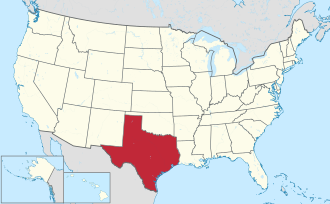Demographics
Historical population| Census | Pop. | Note | %± |
|---|
| 1850 | 3,648 | | — |
|---|
| 1860 | 4,094 | | 12.2% |
|---|
| 1870 | 4,196 | | 2.5% |
|---|
| 1880 | 5,084 | | 21.2% |
|---|
| 1890 | 6,688 | | 31.5% |
|---|
| 1900 | 8,434 | | 26.1% |
|---|
| 1910 | 11,264 | | 33.6% |
|---|
| 1920 | 13,737 | | 22.0% |
|---|
| 1930 | 12,471 | | −9.2% |
|---|
| 1940 | 12,471 | | 0.0% |
|---|
| 1950 | 8,837 | | −29.1% |
|---|
| 1960 | 7,722 | | −12.6% |
|---|
| 1970 | 7,858 | | 1.8% |
|---|
| 1980 | 8,785 | | 11.8% |
|---|
| 1990 | 7,999 | | −8.9% |
|---|
| 2000 | 8,946 | | 11.8% |
|---|
| 2010 | 8,865 | | −0.9% |
|---|
| 2020 | 7,918 | | −10.7% |
|---|
|
San Augustine County, Texas – Racial and ethnic composition
Note: the US Census treats Hispanic/Latino as an ethnic category. This table excludes Latinos from the racial categories and assigns them to a separate category. Hispanics/Latinos may be of any race.| Race / Ethnicity (NH = Non-Hispanic) | Pop 2000 [8] | Pop 2010 [9] | Pop 2020 [7] | % 2000 | % 2010 | % 2020 |
|---|
| White alone (NH) | 6,066 | 6,183 | 5,270 | 67.81% | 69.75% | 66.56% |
| Black or African American alone (NH) | 2,484 | 2,013 | 1,768 | 27.77% | 22.71% | 22.33% |
| Native American or Alaska Native alone (NH) | 11 | 16 | 19 | 0.12% | 0.18% | 0.24% |
| Asian alone (NH) | 18 | 22 | 36 | 0.20% | 0.25% | 0.45% |
| Pacific Islander alone (NH) | 0 | 0 | 0 | 0.00% | 0.00% | 0.00% |
| Other race alone (NH) | 1 | 10 | 0 | 0.01% | 0.11% | 0.00% |
| Mixed or multiracial (NH) | 46 | 89 | 186 | 0.51% | 1.00% | 2.35% |
| Hispanic or Latino (any race) | 320 | 532 | 639 | 3.58% | 6.00% | 8.07% |
| Total | 8,946 | 8,865 | 7,918 | 100.00% | 100.00% | 100.00% |
As of the census [10] of 2000, there were 8,946 people, 3,575 households, and 2,520 families residing in the county. The population density was 17 people per square mile (6.6 people/km2). The 5,356 housing units had an average density of 10 units per square mile (3.9/km2). The racial makeup of the county was 69.26% White, 27.95% Black or African American, 0.20% Native American, 0.20% Asian, 1.64% from other races, and 0.75% from two or more races. Hispanics or Latinos of any race made up about 3.58% of the population.
Of the 3,575 households, 26.8% had children under 18 living with them, 53.5% were married couples living together, 13.5% had a female householder with no husband present, and 29.5% were not families. About 27.0% of all households were made up of individuals, and 14.9% had someone living alone who was 65 or older. The average household size was 2.43 and the average family size was 2.93.
In the county, the age distribution was 23.7% under the age of 18, 6.8% from 18 to 24, 23.0% from 25 to 44, 25.1% from 45 to 64, and 21.4% who were 65 or older. The median age was 42 years. For every 100 females there were 92.10 males. For every 100 females 18 and over, there were 85.90 males.
The median income for a household in the county was $27,025, and for a family was $32,772. Males had a median income of $28,395 versus $18,925 for females. The per capita income for the county was $15,548. About 15.60% of families and 21.20% of the population were below the poverty line, including 30.70% of those under age 18 and 20.10% of those age 65 or over.
Politics
At the presidential level, San Augustine County has voted for the Republican candidate in every election since 2000, having usually been carried by Democratic candidates up until that point.
Like many areas of the South, while Republicans generally win federal and state elections, Democrats tend to perform better in down-ballot races for local offices. Identification with the Democratic Party is strong in San Augustine County. In 2012, roughly 24% of eligible voters participated in the Democratic primary, while less than 6% participated in the Republican primary, despite there being a competitive presidential primary on the Republican ballot. [13]
This page is based on this
Wikipedia article Text is available under the
CC BY-SA 4.0 license; additional terms may apply.
Images, videos and audio are available under their respective licenses.




